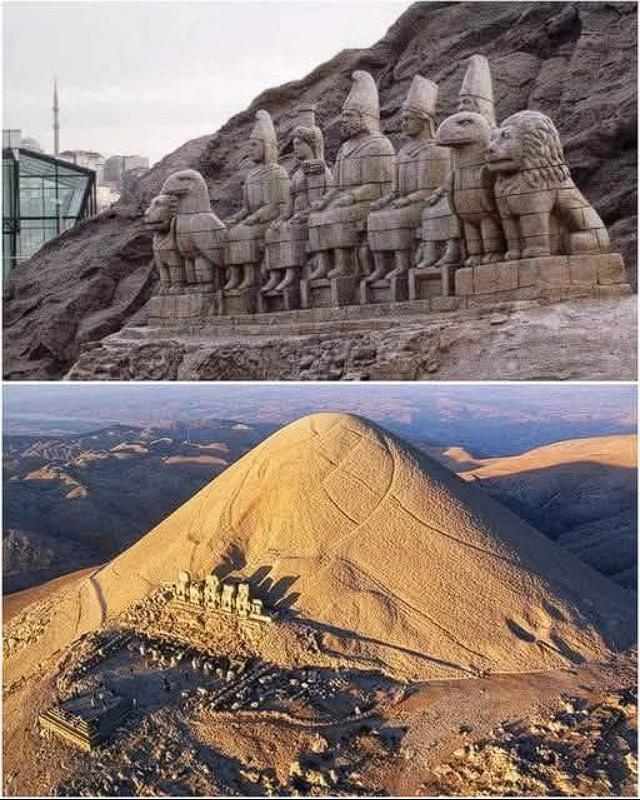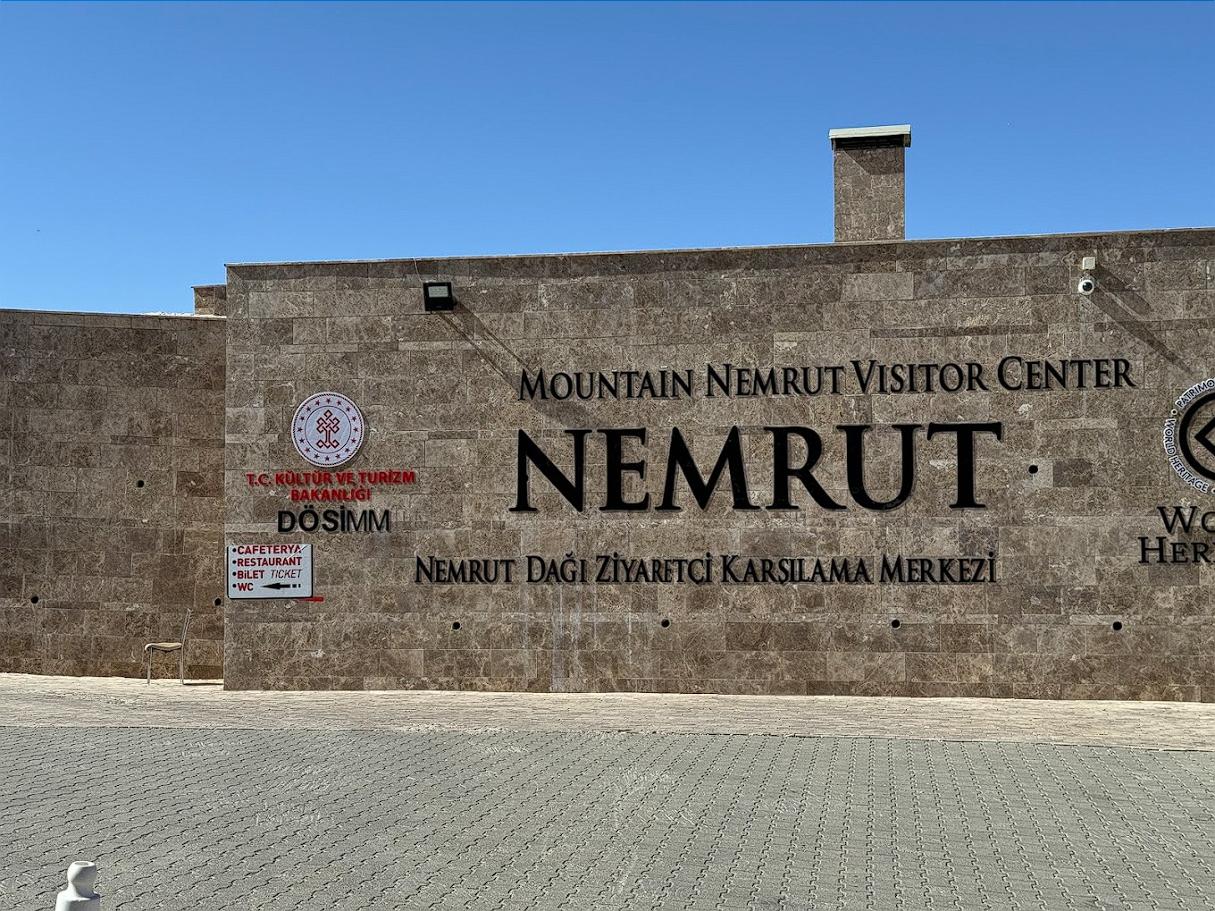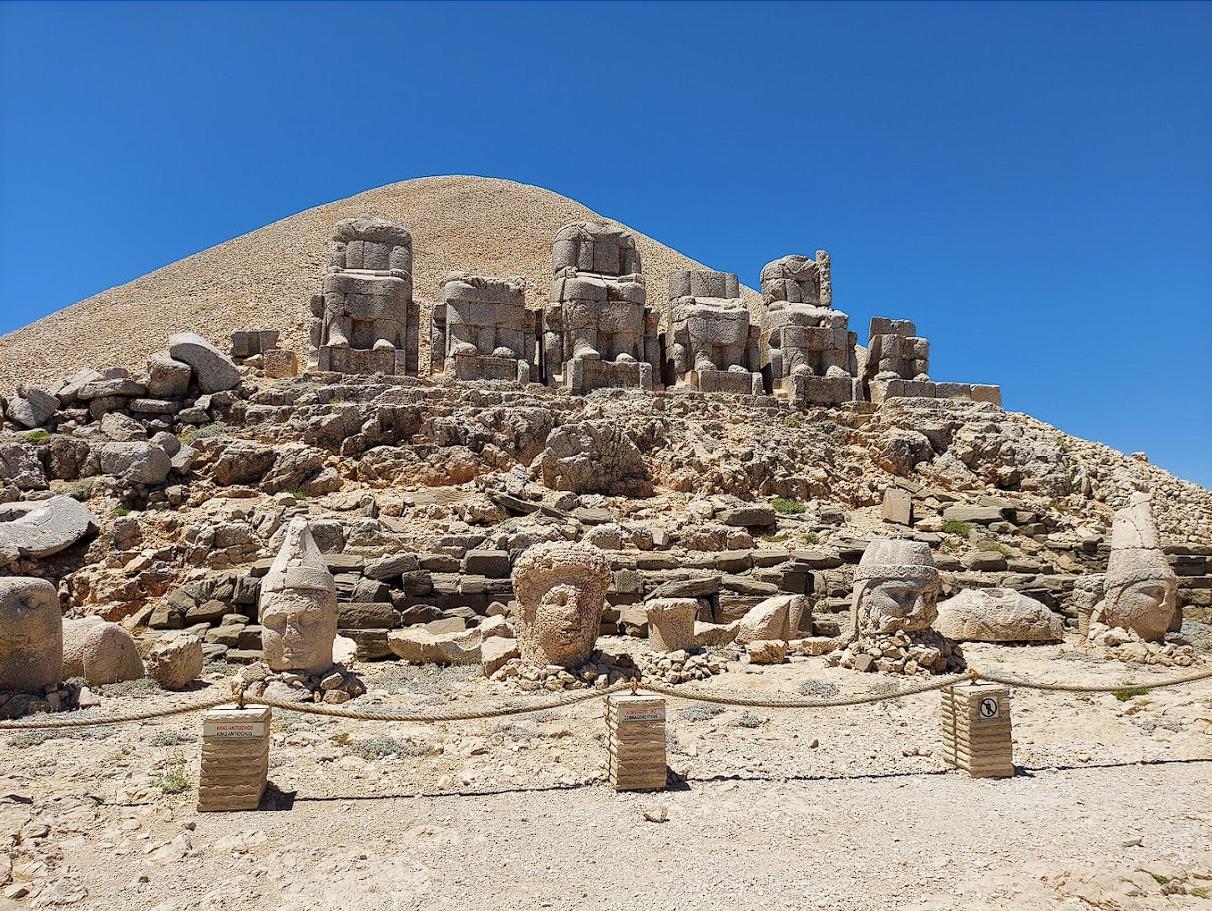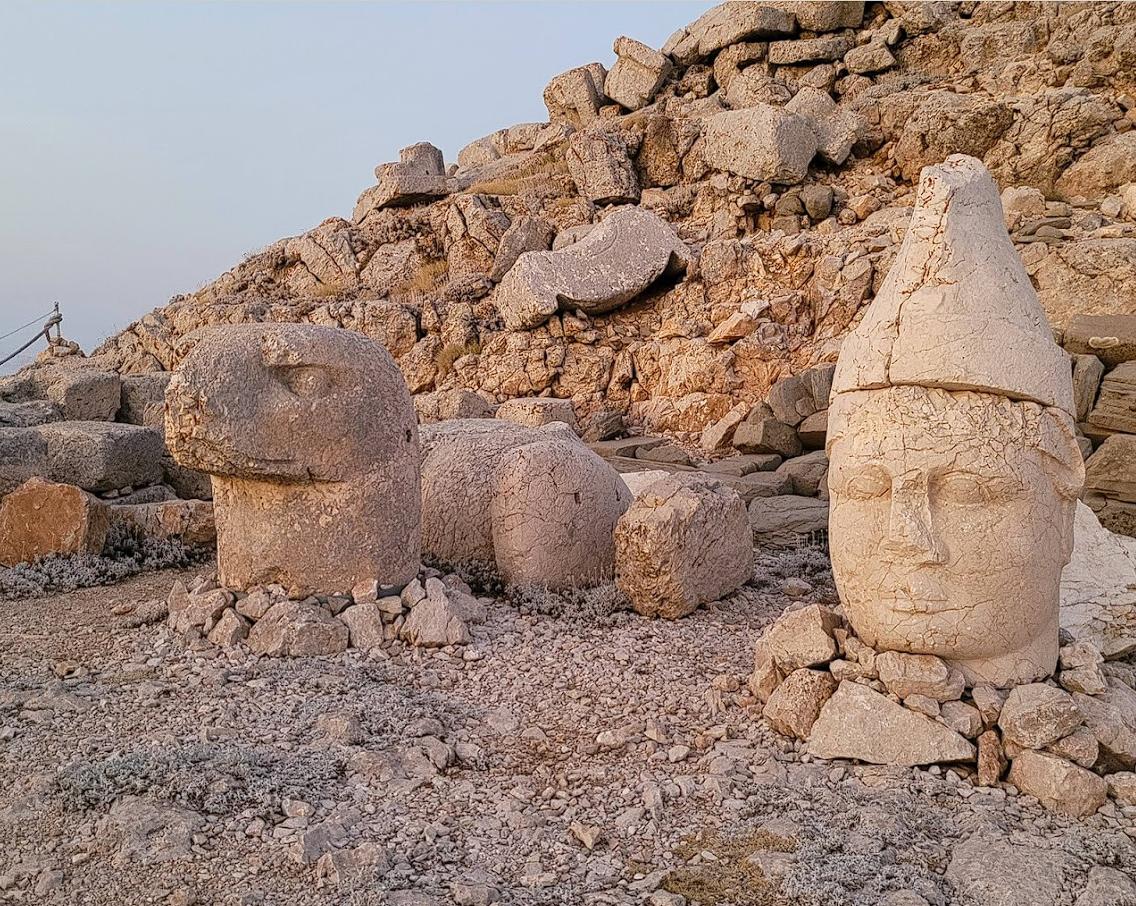“High in the rugged expanse of the Taurus Mountains, in the southeastern reaches of Turkey, Mount Nemrut stands as a sentinel, guarding one of the most awe-inspiring remnants of the Hellenistic age. At an elevation exceeding 2,100 meters, its summit reveals a windswept plateau, crowned by an immense burial mound—a silent testament to the tomb-sanctuary of King Antiochus I of Commagene, who reigned between 69 and 34 BCE.”

Guardians of the Horizon: Stone Colossi in a Timeless Realm
- A Royal Sanctuary: The Summit’s Silent Watchers:
- Here, upon this remote and majestic summit, ancient stone colossi stand watch over the horizon: majestic statues of gods, eagles, lions, and the king himself, once seated in solemn grandeur. Though the ravages of time and the tremors of earthquakes have scattered their forms across the terraces, their severed heads and massive torsos retain an eerie, timeless presence.
- These statues, far from being mere artistic expressions, were a declaration of royal power and divine connection, a tangible link between the earthly realm and the celestial. Their silent gaze, fixed upon the distant horizon, speaks of a world where kings sought to transcend mortality through monumental artistry.
- A Cultural Synthesis: East Meets West in Stone:
- What distinguishes Mount Nemrut is not merely its scale, but the profound synthesis of cultures etched into every detail of its artistry. Greek deities are adorned in Persian attire. Hellenistic iconography intertwines with eastern mysticism.
- This fusion was not a mere stylistic choice; it was a deliberate articulation of Antiochus’s ambition to forge a legacy that bridged the divide between East and West, to unite disparate civilizations through the language of art and divine ancestry. The carvings, therefore, are a visual dialogue between empires, a testament to a king’s vision of a unified world.

Mysteries of the Summit: Echoes of Ritual and Royalty
- Unanswered Questions: The Tumulus’s Silent Secrets:
- The site’s mysteries continue to stir wonder and intrigue. Was the tumulus, this imposing mound of earth and stone, truly Antiochus’s final resting place? What rituals were once performed upon this sacred summit? These questions, shrouded in the mists of time, remain unanswered, their secrets locked within the mountain’s silent embrace.
- The absence of definitive answers does not diminish the site’s power; rather, it enhances its mystique, transforming it into a place of contemplation, a space where the boundaries between history and myth blur.
- A Transcendent Experience: Light and Stone in Eternal Dialogue:
- Visitors who brave the winding mountain road and the biting cold of the morning air are rewarded with an experience that transcends the ordinary: the first light of dawn illuminating the weathered faces of the gods, or the last rays of sunset casting golden fire across the ancient stones.
- In these moments, Mount Nemrut transcends its identity as an archaeological site, becoming instead a place of communion, a mountaintop where history, myth, and the vast expanse of the sky converge in solemn silence, creating a conversation across millennia.

Conclusion
“Mount Nemrut, perched high in the Taurus Mountains, stands as a profound testament to the ambitions of a king and the fusion of cultures that defined his reign. It is a place where ancient colossi guard the horizon, where the whispers of forgotten rituals echo through the stones, and where the meeting of East and West is carved into the very fabric of the mountain itself. This summit, therefore, is not merely a historical site; it is a living narrative, a place where the past speaks to the present in the language of stone and light.”


CÁC TIN KHÁC
Mary Walton: The Forgotten Inventor Who Helped Clean Up America’s Cities
Tomb of Queen Nefertari in the Valley of the Queens, Egypt
Discover the Hypostyle Hall of the Temple of Hathor at Dendera
Venus de Losange: Unveiling the Mystery of a 20,000-Year-Old Paleolithic Icon